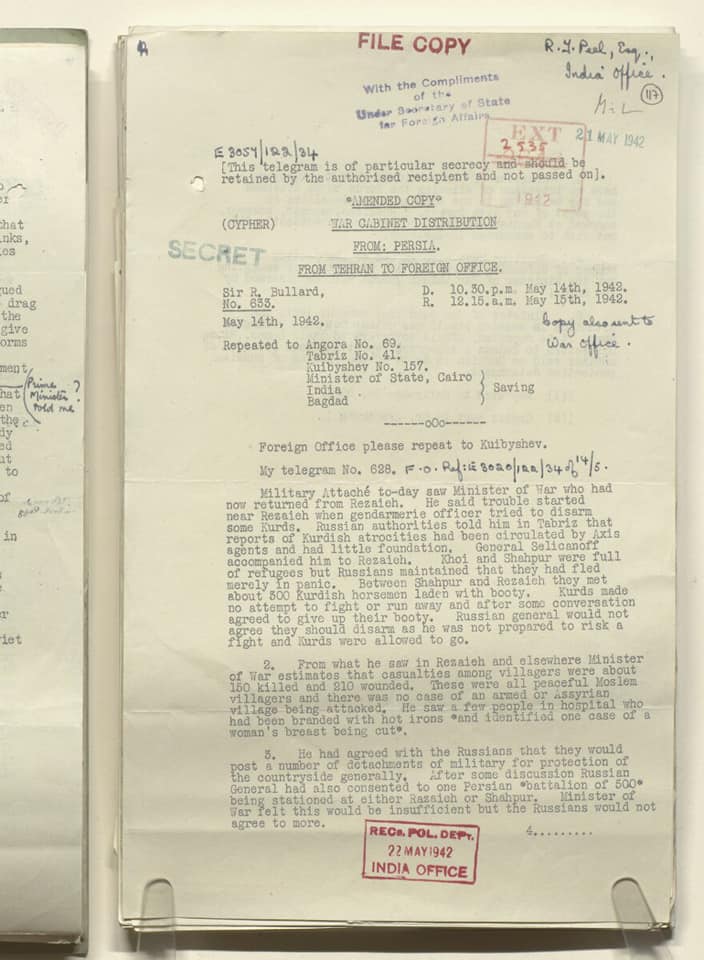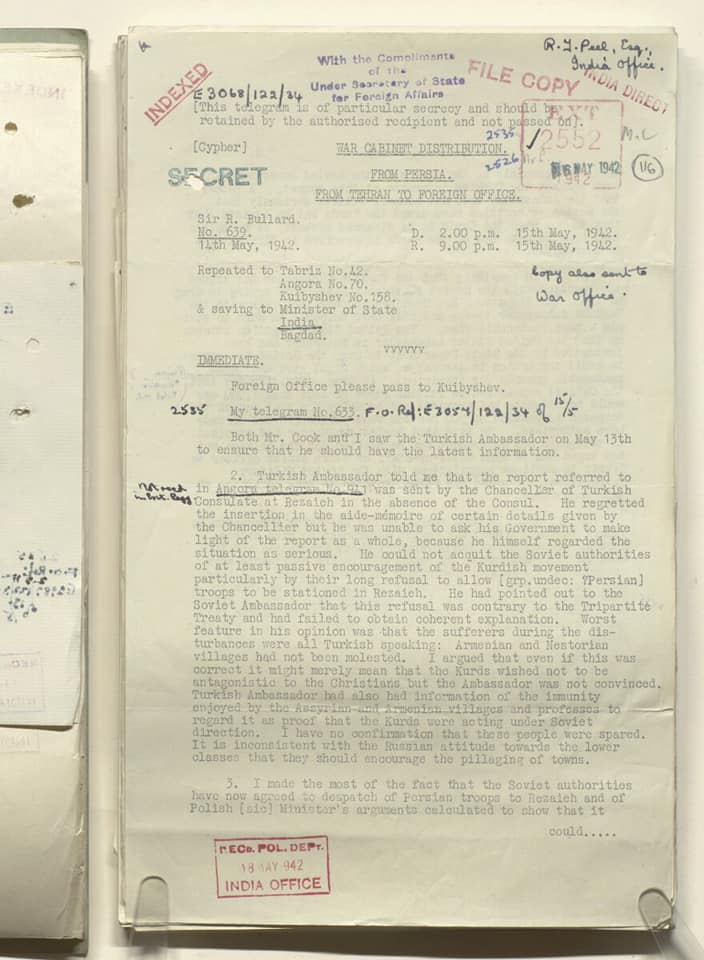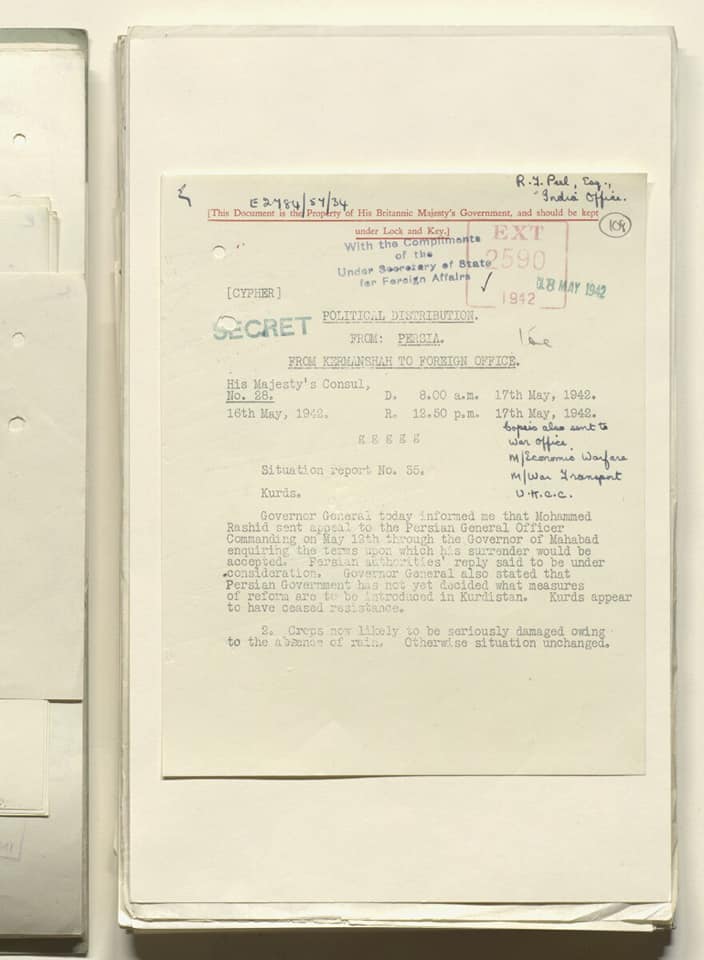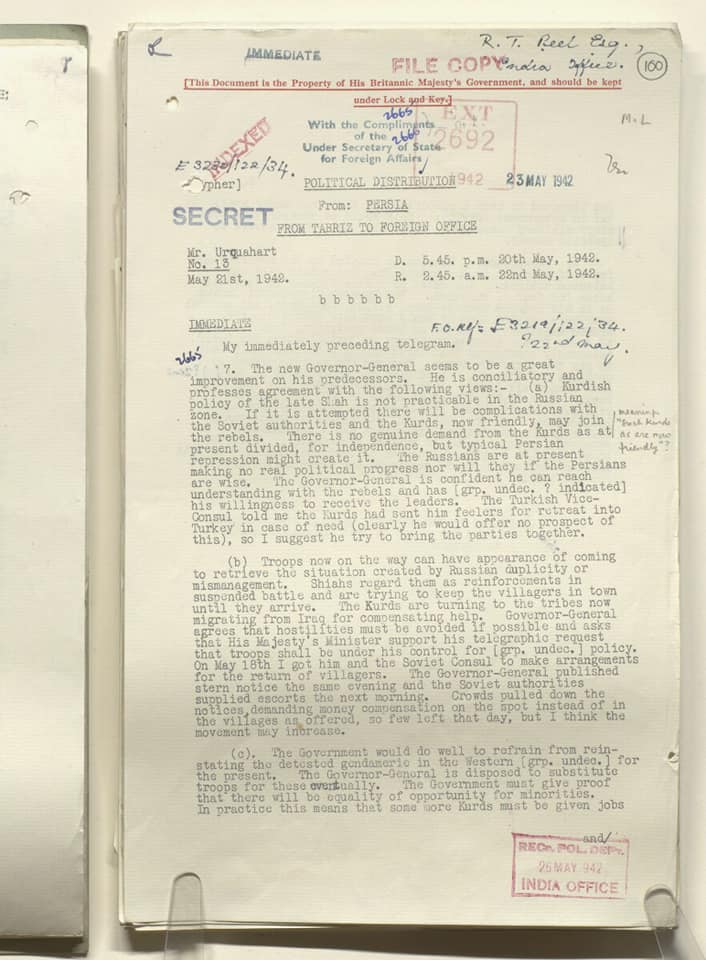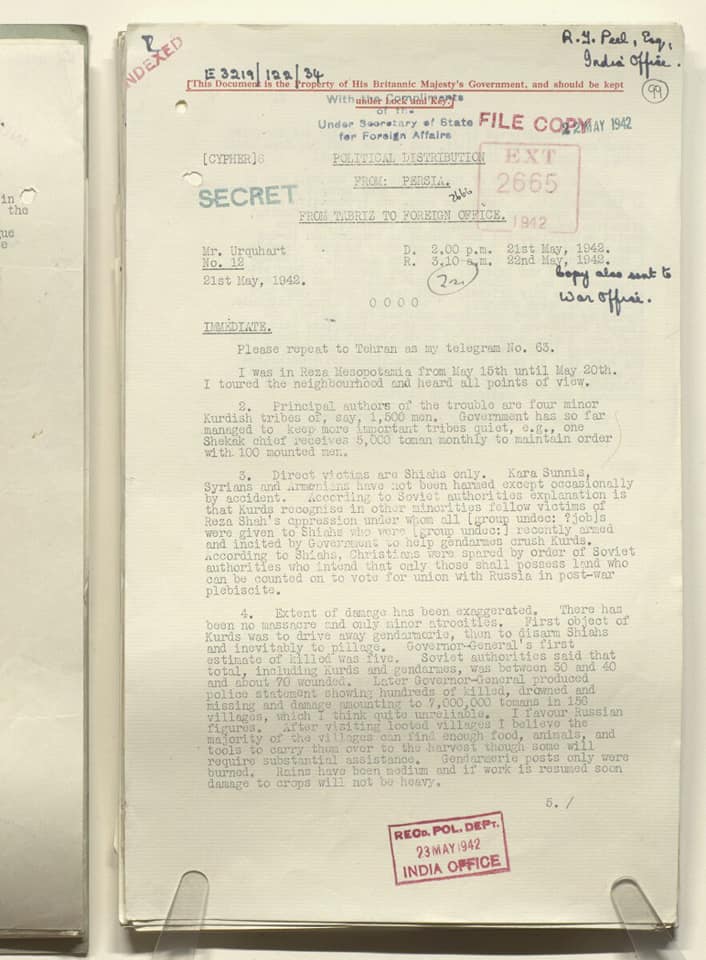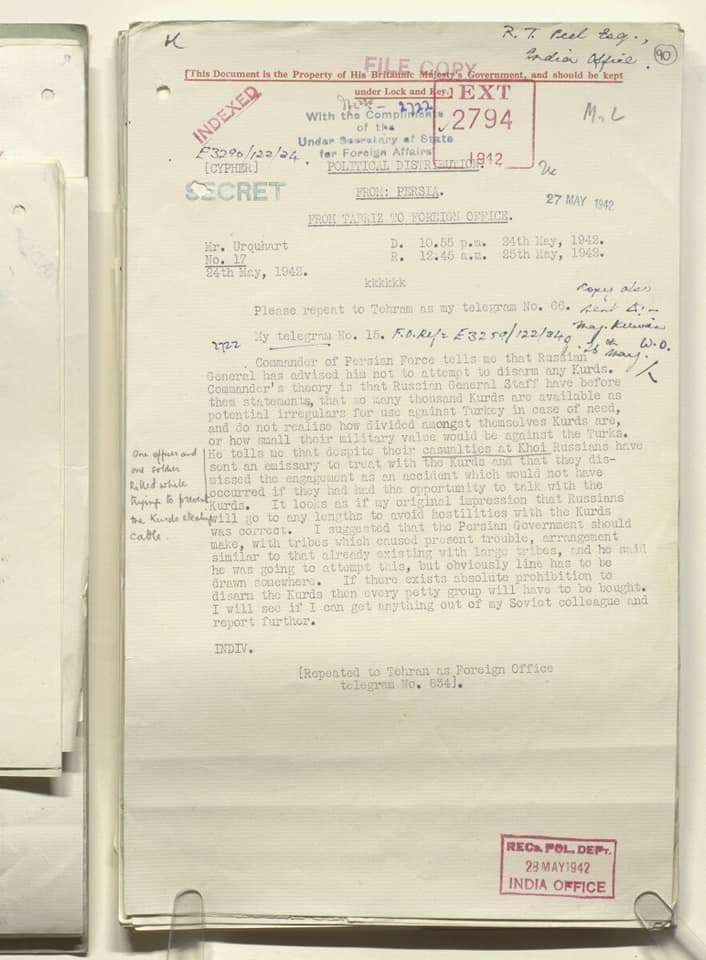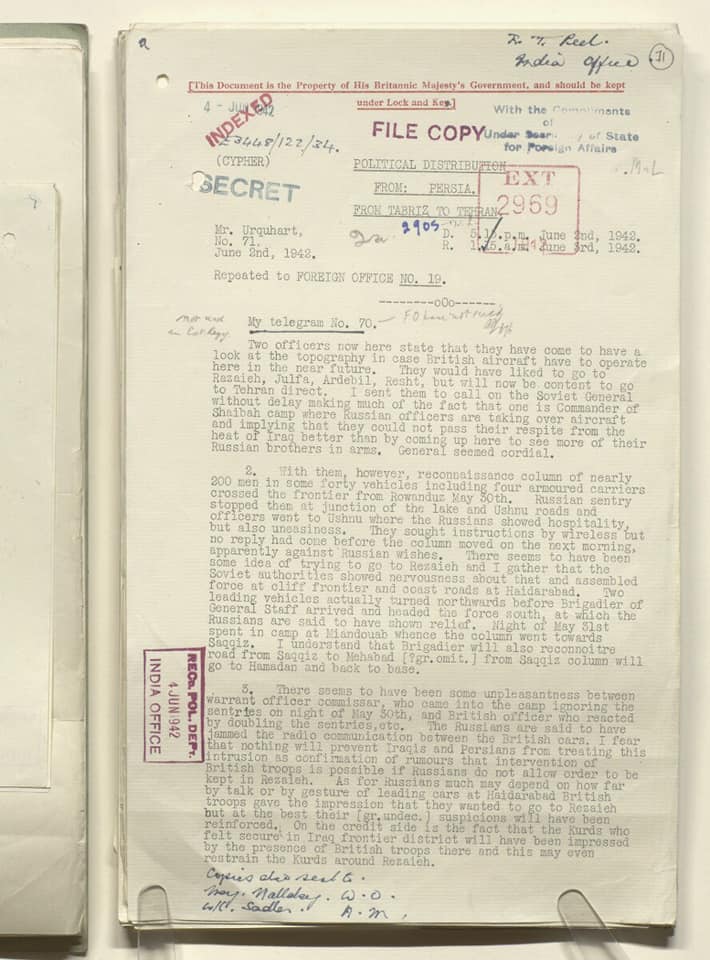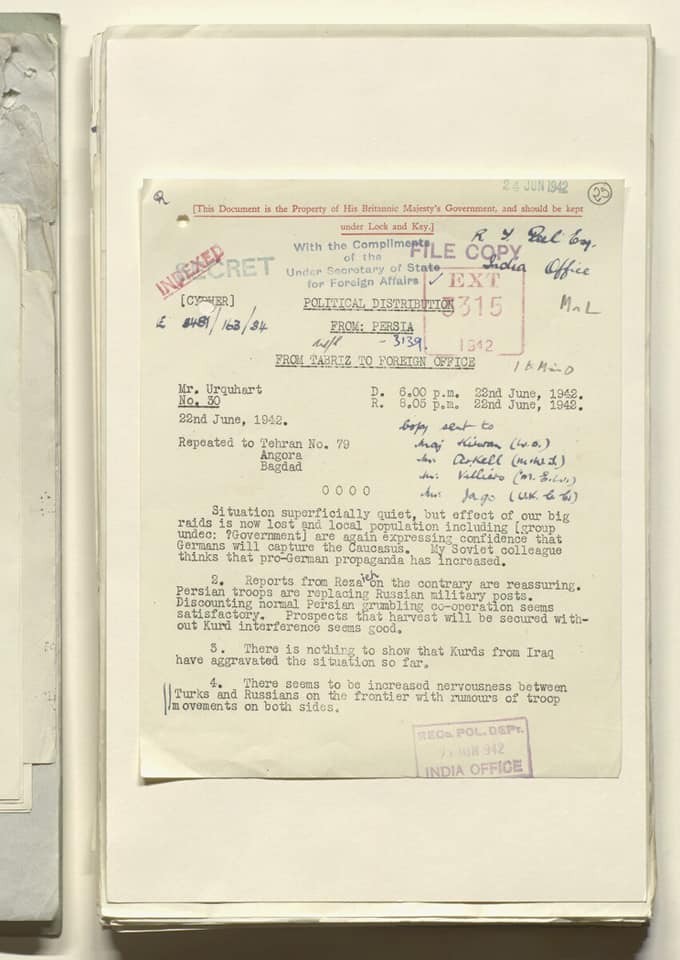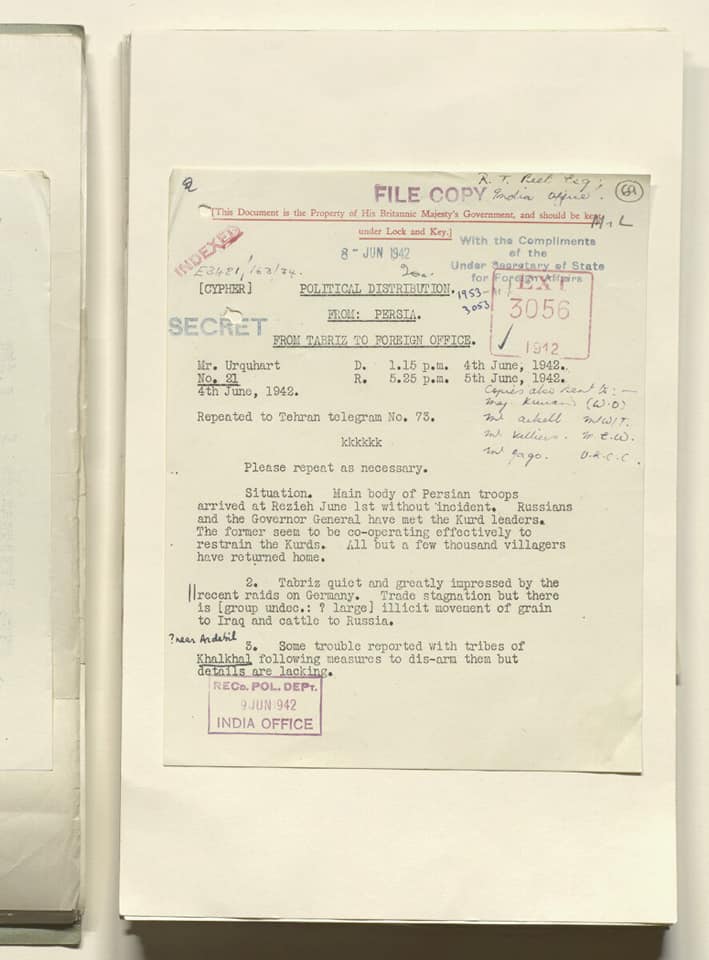NEW Records of the Kurds
- Territory, Revolts and Nationalism 1831-1979, 13 Volume - Cambridge University
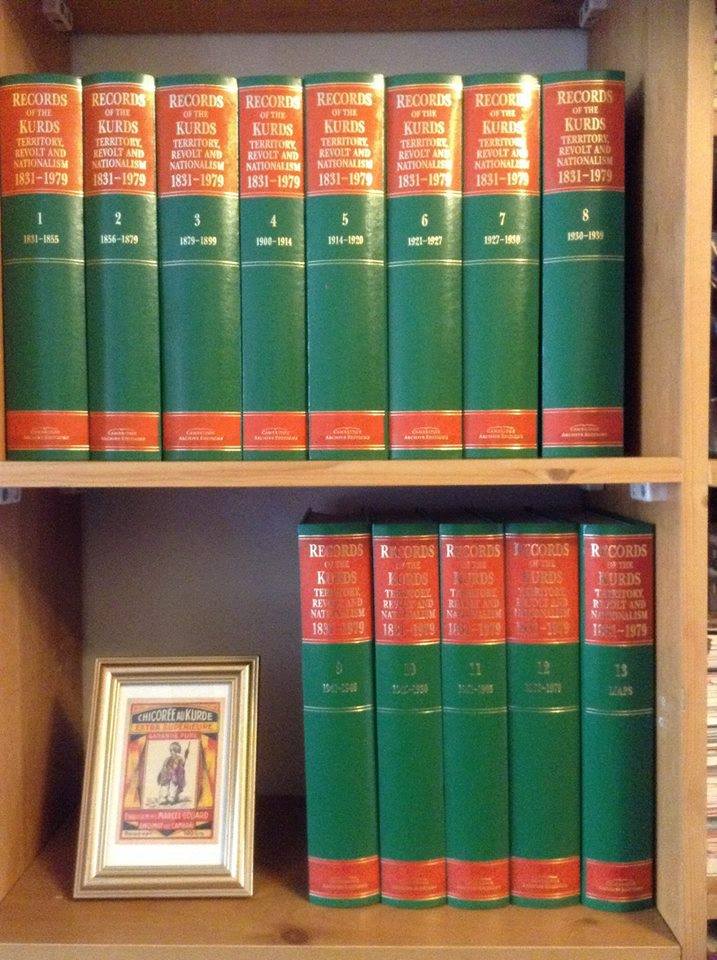
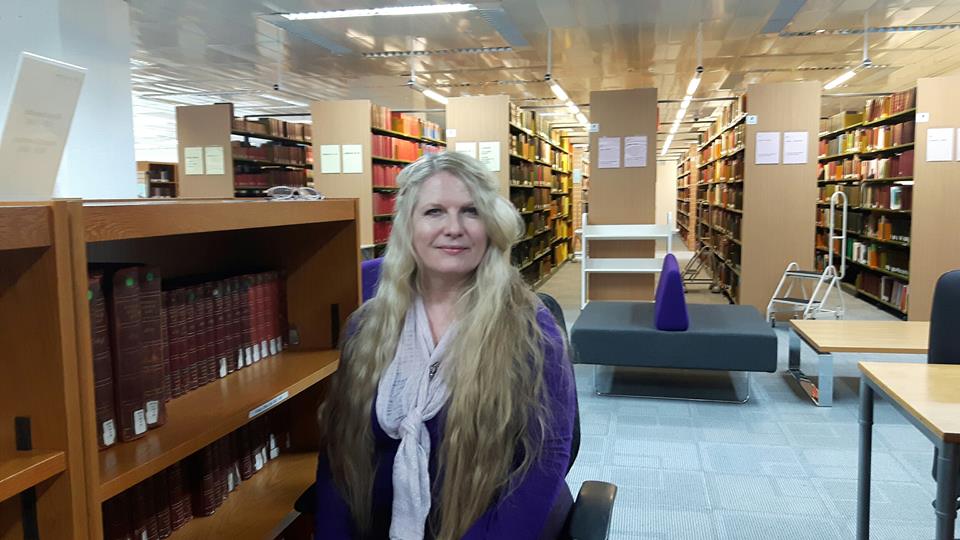
INTERVIEW WITH EDITOR ANITA L.P. BURDETT ABOUT RECORDS OF THE KURDS
-From what weve seen, you have been an editing for the studies of the Middle East archive, what was the source behind these ideas? Why mainly the Middle East?
The Middle East was a geopolitical region chosen by the publisher ( previously Archive Editions) which began in the 1980s. I believe they experienced great success in publishing materials relating to Arabian boundary issues, and began to expand to other topics in the region. Initially I undertook country studies- say, The Records of Saudi Arabia, or the Records of Qatar. Then the records I idenitifed inspired ( to me) thematic approaches, such as my set on the Slave Trade into Arabia. Obviously when looking at the Gulf states as a researcher you then get interested in the Persian side of the Gulf, and so ones interest expands.
-Apart from Cambridge, have you been involved in archive studies of other academic and private institutions?
Yes, including for Canadian government departments, museums and institutes in Arab Gulf states; for law firms ( relating to history of international boundary claims); individual academics.
I am not an employee of Cambridge by the way, I am a freelance historical analyst/editor, just in the happy position of their publishing my work, each book is a new and separately contained project.
-It looks like these studies were very long and tiring, the studies were published with short intervals in between, did you have any difficulties? What was that difficulties and how did you over come?
The intervals for publication were determined by CAE, it might have been I completed one project which didnt get put through for publication straight away, as other projects took priority, so coincidentally two works could come out quite close together: for instance the Kurdish set came out in 2015 but I conceived the project and researched it over 2009-2010; made editorial adjustments at a later date: I would say it involved about 18 months overallthats just my time- dont forget the publishing staff put time in at several levels, then there is binding; etc.So it takes time to get these high quality sets to publication stage.
And it is never tiring, as the research is so compelling, and challenging, and arranging the material, making editorial decisions, describing the documents always has one re-visiting some exciting historical events.
-You did similar publications/studies for different groups previously; such as those they were regarding the Arab World. What are the main differences between the current release (the Kurdish Collection) and the previous publications?
The events traced involving the Kurds were so interesting and varied because of the spread of the Kurdish people across so many territories: it was very challenging to research because I had to be aware of possible materials found under Iraq, Persia, Syria as well as Turkey , whereas records for say, Kuwait, are simply under the Gulf and in limited archival headings. I dont think I have done anything too similar: I looked at Armenian boundaries, but that was 2 volumes- one of which was a map set, and really only looking at what was considered to be Armenia over a limited time, but with Kurds it was about a broader struggle involving nationalist aspirations.
-To waht extent do you think that these documents in the archive? if there is , do you have any idea about the quality and content of them?
If you are asking about more documents, . firstly I hope I have gathered up most of the available documents which relate to the title of the set. However there could be more but some would not be of the same level of importance- so you might find material on trade routes through Kurdistan; or missionary work; and more in private collections, but I was specifically drawing only on official government records. Within these, if the British did not have consular or diplomatic representation in an area, then there would be no reports, I think I note in my preface what type of records I chose and why.
-During the studies,which kind of documents sounded you more interesting and why? Any documents that you could not reach or publish?
Most interesting are vivid descriptions of Kurdish leaders or personalities at various levels which the British provide when they met someone, also ver batim accounts of conversations with these, so that you feel you can hear them talk down through the years. Little anecdotes always stick: there was one young Kurdish tribal leader who was willing to exchange his new wife for the latest European rifle the British consul had!
Technically some documents could not be included if they were damaged, or the ink was faded, or they were tightly bound into what we call guard books so parts of the page were illegible- such material was not that extensive- maybe 5 %.
-We want to know especially about Kurdish Archive, how did this idea occur? How long did you work on this? What kind of impact do you believe your archive will provide to Kurdish research and studies?
I got the idea from my other research into Iran, Iraq and a few small projects which were always referencing Kurds; then the question I asked was why was a nation state NOT created during the Paris Peace Conference, and just delved into the records: then the material itself suggested the theme .
I hope students who are not able to access London archives will make use of it, as I know these records are not digitised, ( therefore not accessible on the internet) and perhaps they will be inspired to ask questions and undertake more research.
-You did an excellent research for Kurdology Studies, particularly for the Contemporary History for historians. That is a notable contribution to the Kurdish Literature. Have you received any positive and negative feedback about this collection? Also can you talk about yourself?
I am very glad to have helped, but yours is the first interest Im aware of.
( I think refer here to my biog note here unless you have a specific question about me?)
-Kurdish and Middle Eastern academics and researcher met these document with great excitement.Would you able to provide a further information?
I am surprised that they have not been consulted and used before by various academics- but then they would have only quoted from them and not necessarily shown the entire document. However to publish such a large collection does involve time, effort and expense, and it is because my publishers programme aims at presenting these mini-archives, having gathered them up from disparate records, that they were prepared to publish such a collection.
But the Kurdish-related documents are tricky to identify within the tens of thousands of volumes of archives connected to the region within the National Archives, and , to a lesser extent, the India Office Archive at the British Library; one does have to understand the Foreign Office structure and British interests in the region to predict where documents might be found. However as open government archives here in the UK they are open to one and all to access.
Although I thought it was terrifically informative material to read, I was worried people would say, yes , but we know this already.
-These documents are very important for Kurdish history. We thank you for presenting these documents.
Im delighted that they will be consulted. But we must all thank the many clever and hardworking British consuls, sent by the Foreign Office, to almost unknown territory, who wrote these informative despatches!
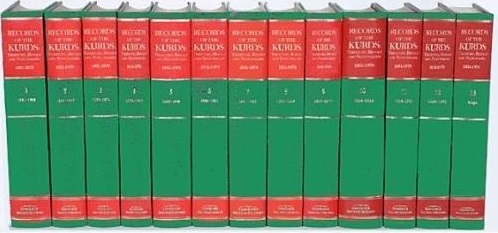
KÜRD MİLLİYETÇİLİK TARIHİ ANSİKLOPEDİSİ
Cambridge Üniversitesinde hazırlanan çalışma 13 Ciltten oluşuyor. Britanya Arşiv Merkezi belgeleri biraraya tarihi sıraya göre getirilmiş. Kürd Belgeleri: Bölge, Direniş ve Milliyetcilik, 1831-1979, başlığı ile yayınlandı. Anita L.P. Burdettin editörlüğünde ve bilinen ve daha çokda yeni açığa çıkmış belgelerden oluşuyor. 9800 sayfa, Kürd tarihinin modern dönemine yeni bir bakış oluşturuyor. Ciltlerin başlangıcında genel özet ve değerlendirmelere verilmiş. Böylece neye bakılacağı kolaylaşmış oluyor. Bu kısa değerlendermeler dışında sadece belgelerin kopyalarına yer verilmiş.
Anlaşılabileceği gibi, Batı Avrupa da sanayi devrimi ile gelişen Milli düşüncenin Kürdistan genelinde, İran devrimine kadar oluşumu belgelendiriliyor. Yer yer Kürdistan çoğrafyası, edebiyatı ve kültürü ile tarihi hakkında da bilgilere yer veriliyor. İlk dönem belgelerinin elyazısı ve kağıt kalitesi engelinden dolayı okunamadığı ve bu belgelerin kullanılamadığı notu eklenmiş.
Birici Cilt: 1831-1855; Cilt 2. 1856-1879. Cilt 3. 1879-1899. Cilt 4. 1900-1914. Cilt 5. 1914-1920. Cilt 6. 1921-1926. Cilt 7. 1927-1930. Cilt 8. 1930-1939. Cilt 9. 1941-1944. Cilt 10. 1945-1950. Cilt 11. 1951-1965. Cilt 12. 1966-1979 ve Cilt 13 ise 37 haritadan oluşuyor. İlk dönem den itibaren çizilen 37 haritalarda çeşitli boyutlarda elçizimi ve bölgeleri ayrı ayrı göstern lehçe ve aşiretler bulunabilir. Ansiklopedi, 2015 sonlarında piyasaya çıktı.
Bütün eser: Dışişleri, askeri, diplomatik ve misyonerlerin Kürdistan'dan Londra merkezine gönderdiği belgelerden oluşuyor. Belgeler British Library, Dışişleri Arşivi, Savaş Bürosu, Hindistan Bürosu, Kolonyal ve Merkezi Hükümet Arşivlerinden derlenmiş. Belgelerin çok az bir bölümü Fransızca-İngilizce, geri kalan hepsi İngilizce yazılmış. İlk dört cilt elyazısı ile yazılmış. 1830 larda daktilo ve teknik kolaylılar bulunmadığından bölge rapor ve belgeleri bu tarzda merkeze iletilmiş.
Bazı örnekler şöyle: 1946 Kürdistan Cumhuriyeti için; Sovyetler ile karşılıklı diplomatik ve ticari ilişkiler geliştirildi. 15 Aralık da kurulan Cumhuriyet, 22 Ocak 1946 da ilan edildi, deniyor. Birleşmiş Milletler Cemiyetine 1956 da Hoybun tarfından Kürdistan haritası olarak eklenen orijinal haritada 1949 da İngilizlerin merkeze gönderdiği şekli ile bu arşivde bulunuyor.
En çok dikkat çeken belge: 1851, 22 Temmuzda Erzurum Konsolosu, James Blant merkeze, Muşir Reis Paşa komutasında 7000 asker 60000 gönüllü ve yerel hıristiyan gönüllülerden oluşan bir güçle Tujik Dağında merkez olan Dersim Kürdlerine askeri bir saldırı ve katliamın raporunu iletiliyor.
8 Kasım 1950 de Türkiye hükümetinin, Kürd problemi kalmadığını düşündüğünü bildiren telgraf eklenmiş Türk dışişleri bakanı artık Kürdlerin her tür haktan yararlandığı ve bu sorunun bittiğini aktarıyor. Ayrıca dışişleri bakanı bölgede ciddi bir sorun olamayacağını çünki, Bölge aşiret liderlerininin Kürd ulusal çıkarlarından çok kendi çıkarlarını düşündüklerini söylüyor.
Bir başka ilginç belge ise; 3 Kasım 1948 de İsrail radyosunun bir Arap kaynağını kullanarak Erivan da Bağımsız Kürd Hükümeti kurulduğunu duyurduğu haberinin oldukca etki uyandırdığı Londra ya acil kodu ile raporun geçildiğini gösteriyor. Buradan Bağımsız Kürd Cumhuriyetine gidileceği yorumlanıyor. Merkezin bu haberin cok önemli olduğu ve açığa kavuşturulması talimatı ekte veriliyor. Yine haberin doğruluğu meselesi 1949 Haziranına kadar Bağdat, Ankara, Tahran ve Londra arasında araştırılıyor, korku ve kaygı ile telgraflar gidip geliyor.
Kürd Milli gelişimi incelenmesi bakımından eşsiz bir kaynak. Önemli ve tarihi belgelerden oluşuyor. Kürd Kayıtları Ansiklopedisi şu ana kadar yapılmış en geniş belge kaynaklı yayındır. Britanya arşivi kaynaklı bu belgeler Kürd meselesindeki araştırmacıların referanslarını genişletecek ve güçlendirecektir.
Birinci cilt, 1831 de Osmanlı-İran savaşı sonrası çıkan ayaklanma ile başlıyor. 1846-1847 Bedirxan Bey direnişi ile devam ediyor. İkinci cilt, 1878-1879 Dersim direnişi ile son buluyor. Üçüncü cilte, Kürd Milli Bağımsızlık Düşüncesi lideri Şeyh Ubeydullah Direnişi belgelendiriliyor. Beşinci ciltte ünlü Lord Curzon yazışmaları var. Altıncı ciltte, 1921-1926 Simko direnişi ve sonuçları anlatılıyor. Yedinci ciltte Cumhuriyet sonrası Kuzey Kürdistan ve Ağrı direnişi yazışmaları gün yüzüne çıkıyor. Adına; belgelerde 1927 Ağrı Kürd Cumhuriyeti diyorlar. Dokuzuncu ciltte 2.Dünya savaşı ve Mahabad deneyimi eklenmiş. Onbir ve onikinci ciltler daha çok Güney Kürdistan ve Barzan direnişleri ile diplomatik faaliyetleri konu ediliyor. On ikinci cilt, Doğu Kurdistan ile 1979 da son buluyor.
Haritalar ise: Erzurum, Doğu Kürdistan, Sivas Bölgesi, Aşiretler, Merkezi Kürdistan, Doğu Kürdistan Aşiretleri, Kürd Nüfusunun Bölge dağılımı, Kürd bölgelerini gösterir belgelerden ve çeşitli bölge ulaşım yollarından oluşmaktadır.
Ali Berzan
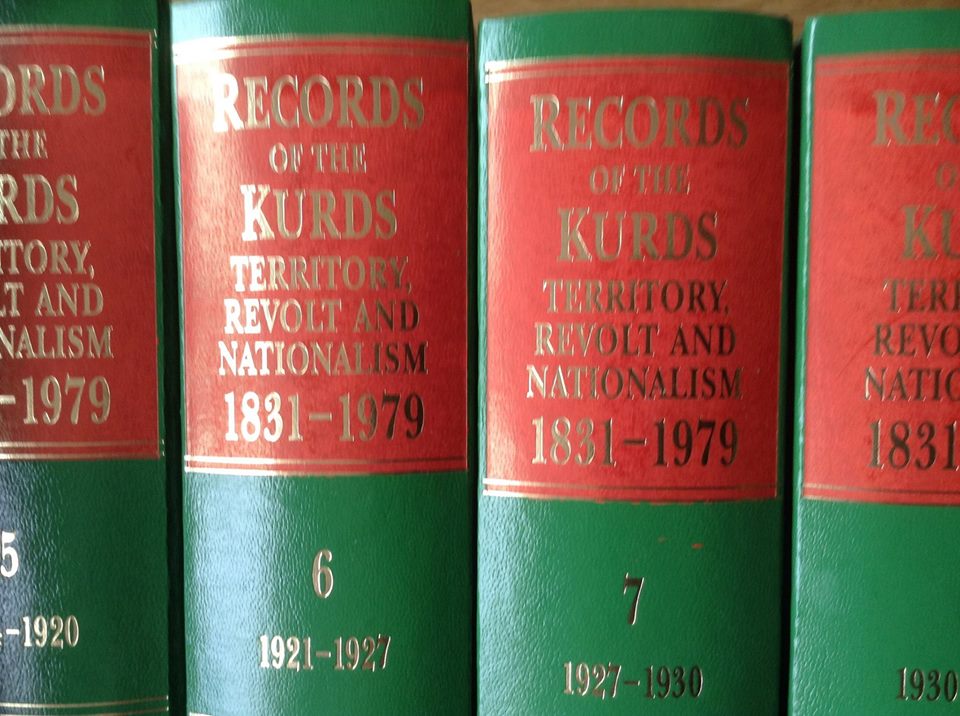
UGGLY BRITISH DOCUMENTS About KURDISTAN REPUBLIC 1947
Documents in this subject: _______________________ Mahabad sürecinde İngiltere Konsolosluğu ile İngiltere Kraliyeti arasindaki telgraf yazişmalari..
|
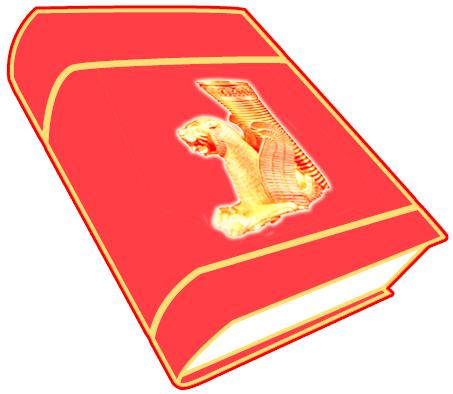
Foundation For Kurdish Library & Museum
